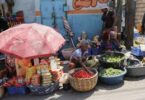Troy Stangarone
South Korea’s economic performance since 2020 cannot be divorced from its handling of COVID-19 and its role in global supply chains. After winning praise for its handling of the pandemic, Seoul was able to minimise the initial economic damage of the pandemic and saw a relatively strong economic recovery in 2021. South Korea must now navigate a slowdown in exports and rising inflationary pressures to maintain economic growth in 2022.
South Korea weathered the first year of the pandemic through a combination of fiscal and monetary stimulus, strong second-half export growth, and its use of contact tracing to manage the pandemic domestically. It experienced a modest 0.9 per cent GDP decline in 2020 and had returned to pre-pandemic levels of economic activity by May 2021.
Trade was important for minimising South Korea’s economic damage in 2020. Despite ongoing global supply chain disruptions, South Korea’s economic recovery has benefitted from a surge in demand for consumer durables during the pandemic. Its position as a global leader in semiconductors and consumer electronics enabled it to capitalise on this surge in demand. It also experienced a surge in exports of pandemic-related medical supplies, in part thanks to its pandemic successes.
South Korea continued to benefit from strong global demand in 2021. Exports expanded by 25.7 per cent for the year and reached a record high of US$644.4 billion. Sustained global demand for semiconductors helped to support growth in chip exports (31.8 per cent), alongside strong growth in exports of plastics (37 per cent), mineral fuels (57.3 per cent) and passenger vehicles (24.4 per cent). The strong growth in exports, along with facilities investment and a rebound in domestic consumption, helped South Korea’s GDP grow by 4 per cent.
Despite South Korea’s relatively strong recovery, its overall economic performance remains below pre-pandemic expectations. The OECD expects South Korea’s GDP growth to slow to 3 per cent in 2022, raising questions about the future of South Korea’s economic recovery in the face of Omicron and other new variants.
The pandemic has continued to create uncertainty for parts of the services sector. While South Korea’s usage of contact tracing mitigated COVID-19 cases and deaths, it was slow to adopt a vaccination program. By mid-July of 2021, only 11.6 per cent of the South Korean population was fully vaccinated. In contrast, 56.2 per cent of the US and 70 per cent of the EU adult population had been fully vaccinated at that time. These figures shifted drastically by the end of 2021, with 82.9 per cent of South Koreans becoming fully vaccinated, ahead of most European nations and the United States.
With vaccination rates up at the beginning of November, South Korea began a three-stage plan to lift COVID-19 restrictions and transition to a policy of ‘living with COVID’. But rising infections, deaths, and a strain on medical facilities forced the government to announce the return of strict COVID-19 protocols in mid-December.
COVID-19 restrictions have suppressed private consumption and negatively impacted employment in the service sector, especially for women. While official statistics indicate that total employment had reached pre-crisis levels by September 2020 and employment for women improved in 2021, Korean women are more likely to be temporary workers and account for the majority of employment in sectors such as transportation, food and accommodation. These industries continue to face uncertainty from the pandemic.
Global trade is beginning to slow. The WTO’s Goods Trade Barometer suggests that global merchandise trade growth will likely return to pre-pandemic levels after growing by 10.8 per cent in 2021. Slowing demand for durable goods may place further pressure on the return to normal in the services sector needed to maintain economic growth.
South Korea’s economy also faces risks from growing inflation caused by demand for consumer durables and bottlenecks in supply chains in developed economies. While the level of inflation has been low in South Korea, the Bank of Korea indicated that consumer price inflation rose above three per cent at the end of the year and finished at 2.5 per cent for the full year. Inflation is expected to remain above three per cent for an extended period.
Despite relatively low inflation compared to the United States and Europe, the Bank of Korea began normalising monetary policy in August when it raised interest rates in response to rising housing prices and growing household debt. It followed with a second rate increase in November and is expected to continue raising rates in 2022.
While South Korea’s economy has performed well during the pandemic, COVID-19 continues to impact economic growth. The ability of the Moon administration and its successor to reduce COVID-19 related measures, while navigating inflationary pressures and a likely slowdown in exports, will be key to South Korea’s ability to maintain strong economic growth in 2022.
Troy Stangarone is Senior Director and Fellow at the Korea Economic Institute of America. The views expressed here are solely those of the author alone and do not reflect the views of the Korea Economic Institute of America.






